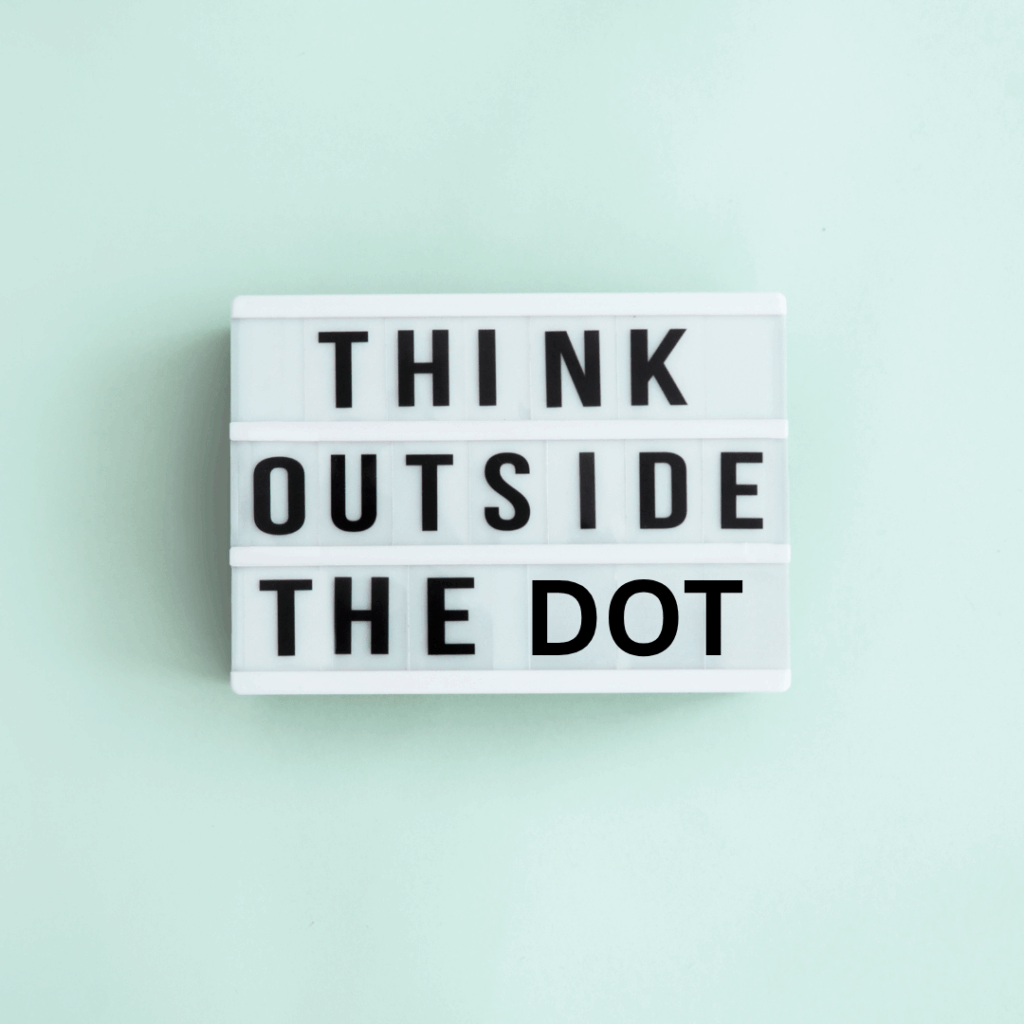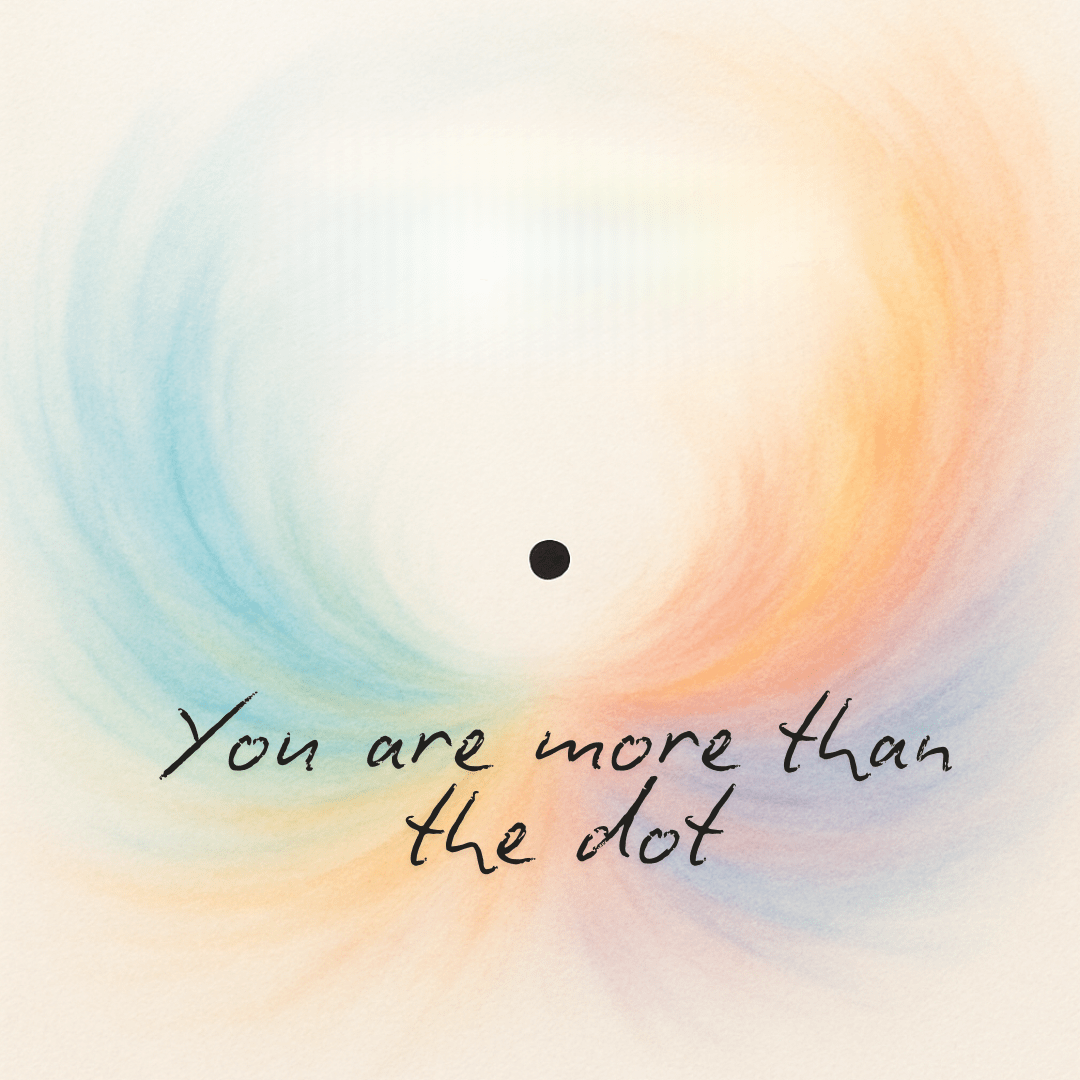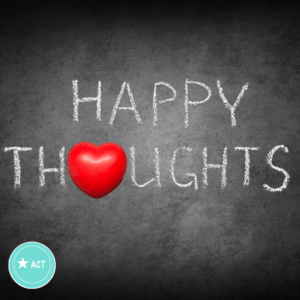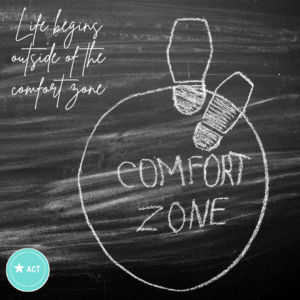When Your Limits (the Dot) Becomes the Whole Story
You might recognize this in your own life (i.e. areas were you focus on your limits):
You get glowing feedback on a project, but one piece of constructive criticism sticks with you for days.
You’ve had a productive week, but you missed one workout or forgot one task — and suddenly you feel like a failure.
You have many meaningful relationships, but one strained interaction loops in your mind on repeat.
This is the dot taking over the page.

Why focusing on your limits hurts
Emotional Magnification
When we zoom in on the dot, we emotionally magnify its meaning. What could have been a momentary mistake becomes a reflection of our self-worth. We don’t just feel bad — we start to feel broken.
The Illusion of Control
Sometimes we focus on the dot because we think if we obsess over it enough, we can fix it, erase it, or make it not have happened. But rumination is not resolution — it’s just mental spinning.
The Shame Trap
The dot often carries shame. Shame makes us hide, shrink, and silence ourselves. Unlike guilt, which says “I did something bad,” shame says, “I am bad.” It’s powerful — and toxic — if left unchecked.
Reclaiming the Page (Beyond your limits)
Here’s the truth: the dot isn’t the end of the story. It can be part of the design.
Use the Dot as Contrast
Just like artists use a single mark to create perspective, you can let the “dot” be a point of contrast — something that highlights your strength, your comeback, your growth.
“I got that one thing wrong — but look at everything else I’ve learned because of it.”
Build a Practice of Wholeness
Begin each day or end each week with a “page view” exercise:
What are three things that went right today?
How am I proud of myself?
What did I handle with courage or care?
Train your brain to see the white space, the full canvas, not just the blemish.
Talk Back to the Inner Critic
Your inner critic will always draw your eye to the dot. You don’t have to silence it — just don’t give it the microphone.
Respond with:
“Thank you for your concern. But I’m choosing to see the whole picture.”
“That one dot doesn’t erase all the beauty in the rest of me.”

Real Growth Is Messy
We’re not meant to be perfect.
We are meant to be human. To learn and live. To get things wrong and grow anyway.
And maybe that’s the biggest lesson of all:
You can carry the dot (your limits) and still create a masterpiece.
Ready to uncover the rest of the page?
Contact me at ACT to find out more how we can help you break free from your DOT (unhelpful thoughts, emotions and behaviours). Those things that had held you back.
Imagine having the freedom to move towards what you want. What would that be like?
Book your Free Consultation.




